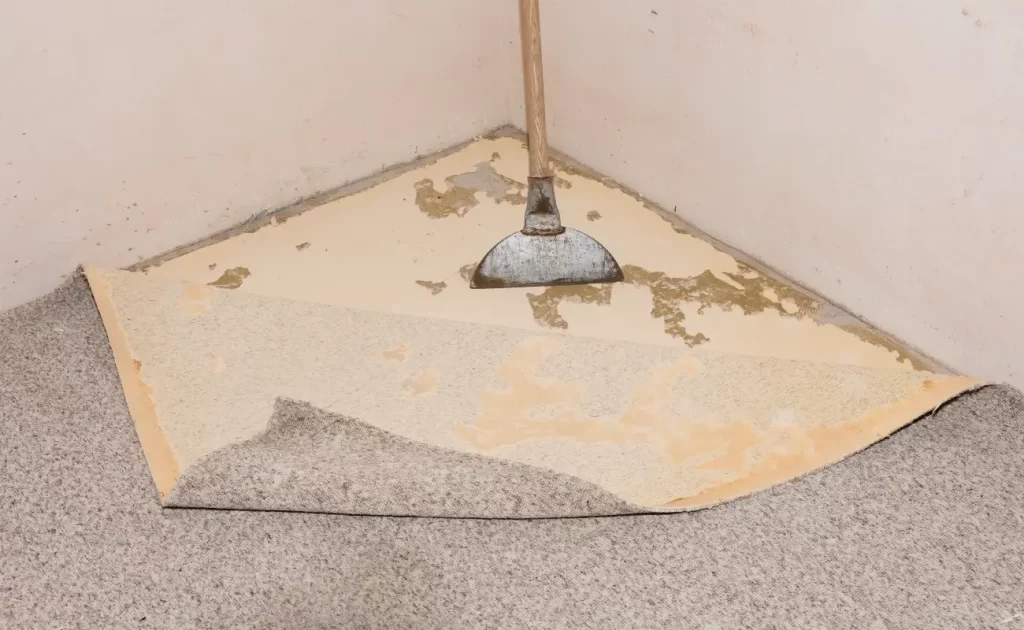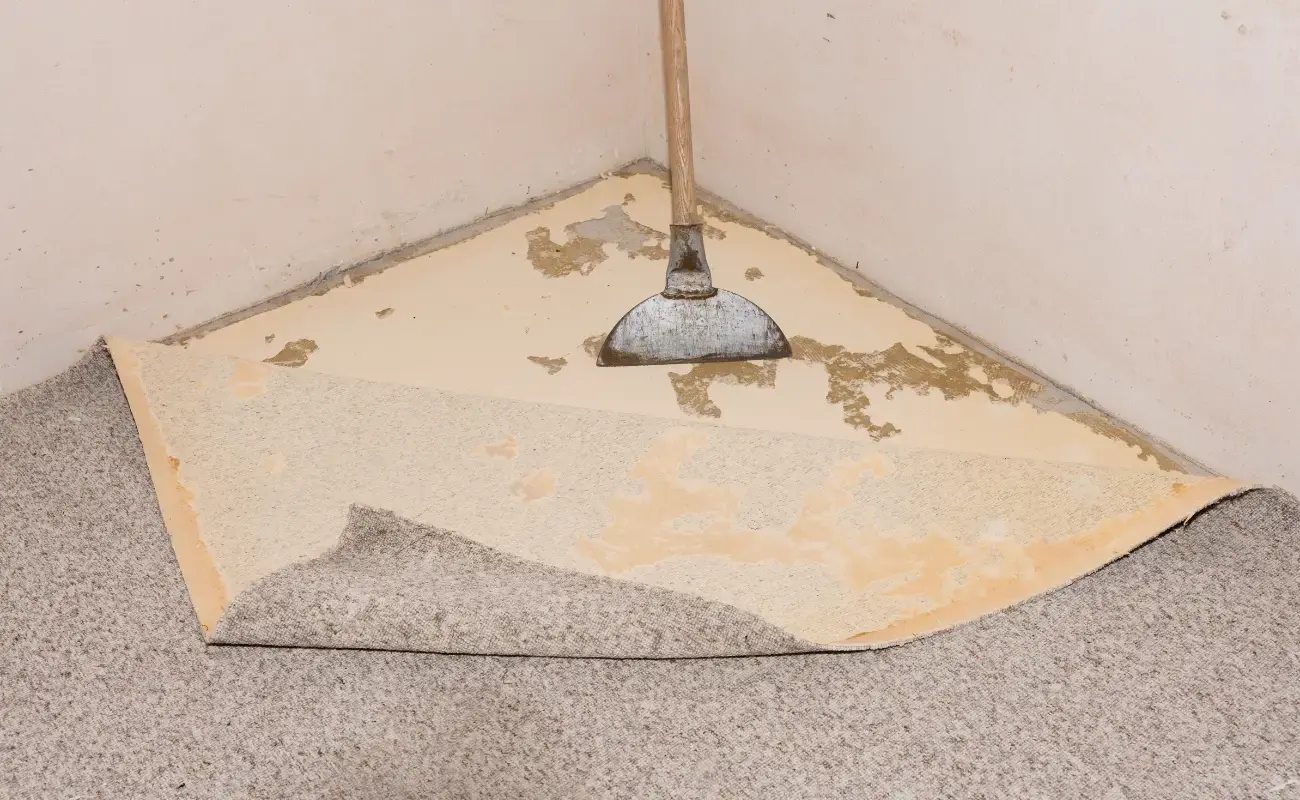Carpet adhesive is a vital component in the world of flooring, ensuring that carpets stay firmly in place and providing numerous benefits for both residential and commercial spaces.
Let’s dive into this peculiar topic and uncover the taste, health risks, and even unique uses of glue beyond its intended purpose.
So, what exactly is carpet adhesive? It is a special type of glue formulated to bond carpets to various substrates securely. This article delves into the different facets of carpet adhesive, exploring its uses, pros, cons, and valuable tips for applying structural adhesive effectively.
Exploring Types of Carpet Adhesive

http//:gluedigi.com
Water-Based Carpet Adhesive
Water-based carpet adhesives are eco-friendly and low in volatile organic compounds (VOCs), making them a popular choice for indoor applications. They offer a strong initial tack and have a relatively easy cleanup process. Their versatility allows them to be used with a wide range of carpet materials, including jute-backed, woven, and tufted carpets.
Solvent-Based Carpet Adhesive
Solvent-based adhesives are known for their quick bonding properties and high moisture resistance. They are well-suited for high-traffic areas and can handle heavy loads. However, it’s essential to ensure proper ventilation during their application due to the release of strong fumes.
Hot Melt Carpet Adhesive
Hot melt adhesives, commonly known as glue sticks, are heated and applied in their molten state. They solidify upon cooling, providing rapid bonding. They are easy to use, making them ideal for DIY carpet installations, and offer good adhesion to various substrates.
Acrylic Carpet Adhesive
Acrylic adhesives strike a balance between water-based and solvent-based adhesives. They possess excellent bonding strength and are resistant to moisture, making them suitable for both indoor and outdoor applications. Acrylic adhesive technology has evolved to provide better environmental credentials compared to traditional solvent-based options.
Common Uses of Carpet Adhesive
Carpet adhesive finds widespread applications in the world of flooring. Let’s explore some of its most common uses:
Residential Carpet Installation
It is a go-to choice for residential spaces. It ensures that the carpet remains securely fixed to the floor, creating a comfortable and inviting environment in bedrooms, living rooms, and other areas.
Commercial Carpet Installation
In high-traffic commercial spaces such as offices, hotels, and retail stores, the use of adhesive for carpets provides a dependable solution to keep carpets securely in place. Its durability against heavy foot traffic makes it an excellent choice for these environments.
Carpet Tile Applications
Carpet tiles are a versatile flooring option, and carpet adhesive is the key to their successful installation. It allows for precise placement and alignment, resulting in a professional finish.
Carpet Seam Repair and Fixing
For damaged carpets or seams that need fixing, carpet adhesive is the savior. It can mend torn edges and reattach loose seams, extending the life of the carpet.
Carpet-to-Carpet Joining
When installing carpets in large areas or transitioning between different rooms, it helps create seamless joins, giving the flooring a uniform and cohesive appearance.
10 Pros of Carpet Adhesive Application
Let’s dive deeper into the advantages of using carpet adhesive for your flooring projects:
- Superior Bonding Strength: It creates a powerful bond between the carpet and the floor, ensuring the carpet stays in place for years to come.
- Versatility in Flooring Materials: Whether you have a nylon, polyester, or wool carpet, the right adhesive can cater to a variety of carpet types.
- Long-Lasting and Resilient: Carpets installed with adhesive are more likely to withstand heavy foot traffic and daily wear and tear.
- Noise Reduction and Soundproofing: Adhesive for carpets effectively minimizes noise transmission between floors, making it an ideal choice for multi-story buildings and apartments.
- Seamless and Aesthetic Appearance: When properly installed with adhesive, carpets appear seamless, enhancing the overall aesthetics of the space.
- Minimal Maintenance Requirements: Adhesive-bound carpets require less maintenance and are easy to clean compared to loose-laid carpets.
- Suitable for High-Traffic Areas: In commercial spaces with high foot traffic, adhesive-bound carpets hold up exceptionally well.
- Enhanced Comfort Underfoot: The adhesive layer adds a cushioning effect, offering a comfortable surface to walk on.
- Supports Underfloor Heating Systems: It allows installation of carpets over underfloor heating systems, ensuring efficient heat distribution.
- Cost-Effective Flooring Solution: In the long run, carpet adhesive can prove cost-effective as it extends the lifespan of carpets and minimizes repair expenses.
10 Cons of Carpet Adhesive Application
While carpet adhesive brings many benefits, it’s crucial to be aware of its potential downsides:
- Initial Strong Odor: Certain carpet adhesives emit strong odors during installation, which can be unpleasant for some individuals.
- Environmental Impact and VOCs: Some adhesives contain VOCs that can contribute to indoor air pollution and have environmental consequences.
- Tedious Removal Process: When it’s time to replace the carpet, removing adhesive can be a laborious and time-consuming task.
- Potential Allergens: The dust or fumes released during installation may trigger allergies or respiratory issues in sensitive individuals.
- Incompatibility with Certain Subfloors: Some adhesives may not adhere well to certain subfloors, leading to inadequate bonding.
- Not Ideal for Temporary Installations: If you plan to change the flooring frequently, adhesive-bound carpets may not be the best option.
- Complexity in Repairing Damaged Sections: Fixing damaged areas of a carpet bound with adhesive can be more challenging than dealing with loose-laid carpets.
- Limited Reusability of Adhesive: Once applied, some adhesive types lose their adhesive properties and cannot be reused for other installations.
- High Initial Installation Costs: Compared to loose-laid carpets, adhesive-bound carpets may have higher installation costs.
- Potential Hazards during Improper Application: Inexperienced or improper application of adhesive may lead to uneven surfaces or other hazards.
Factors to Consider Before Using Structural Adhesive
Applying structural adhesive effectively requires attention to various crucial factors:
Substrate Compatibility and Preparation
Before applying adhesive, ensure that the substrate surface is clean, dry, and free from any contaminants that could hinder bonding.
Environmental Conditions for Application
Consider the ambient temperature and humidity during application, as they can affect the adhesive’s performance.
Adhesive Curing Time
Allow the adhesive sufficient time to cure properly, as rushing the process may compromise its bonding strength.
Safety Precautions during Application
Wear appropriate safety gear, such as gloves and masks, to protect yourself from adhesive fumes and potential skin irritation.
Storage and Shelf Life of Adhesive
Properly store adhesive in a controlled environment and be aware of its shelf life to ensure optimal performance.
Tips and Tricks to Use Structural Adhesive Effectively
To make the most of structural adhesive, follow these valuable tips:
- Surface Cleaning and Preparation: Thoroughly clean the surface and remove any debris or dust before applying adhesive.
- Proper Adhesive Selection: Choose the right type of adhesive based on the materials you are bonding and the environmental conditions.
- Employing the Right Application Tools: Use appropriate tools like adhesive spreaders or brushes to ensure even application.
- Adhesive Quantity and Coverage: Apply the adhesive in the right quantity to achieve optimal bonding without excess wastage.
- Managing Open Time and Pot Life: Adhesive has a limited working time, so plan your installation process accordingly.
- Correcting Application Errors: If you make mistakes during application, take corrective measures promptly to avoid issues later.
- Ensuring Adequate Ventilation: Ensure sufficient ventilation during adhesive application to disperse any fumes.
- Testing Adhesive Performance: Before full-scale application, conduct a small test to check the adhesive’s compatibility and performance.
Conclusion
Carpet adhesive is a versatile and essential element in the world of flooring. Its ability to create strong, long-lasting bonds ensures that carpets stay in place while providing various advantages like noise reduction, thermal insulation, and enhanced comfort underfoot. However, it’s essential to consider potential disadvantages such as odor, environmental impact, and difficult removal processes. By taking proper precautions and following valuable tips for adhesive application, you can make the most of this remarkable flooring solution.
